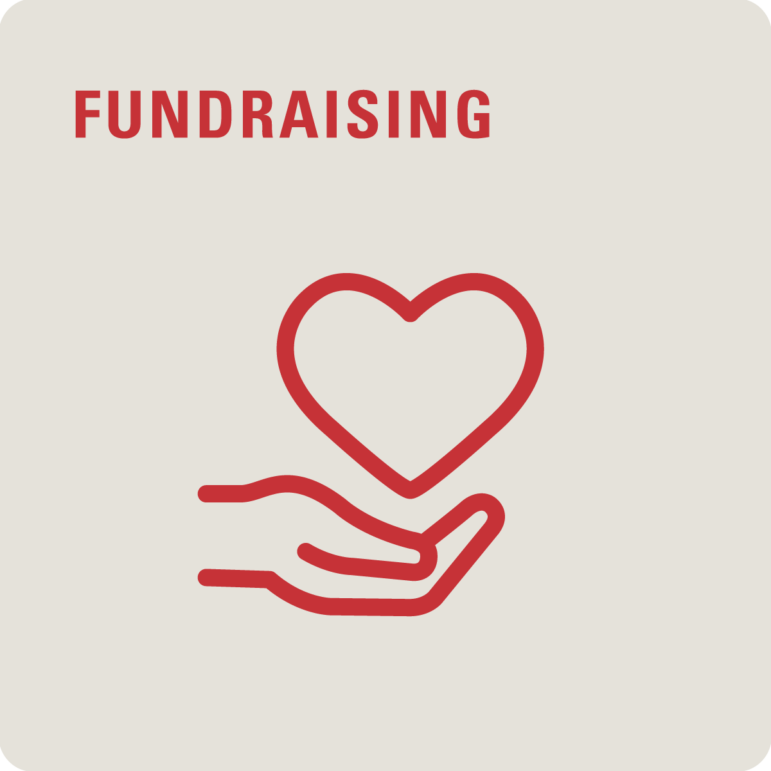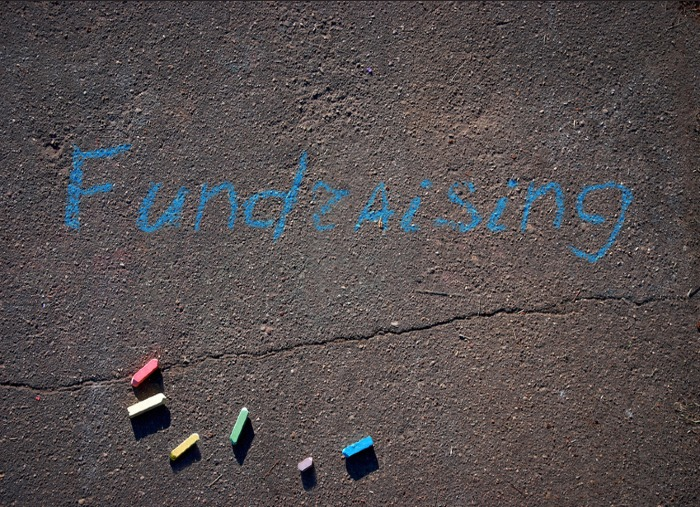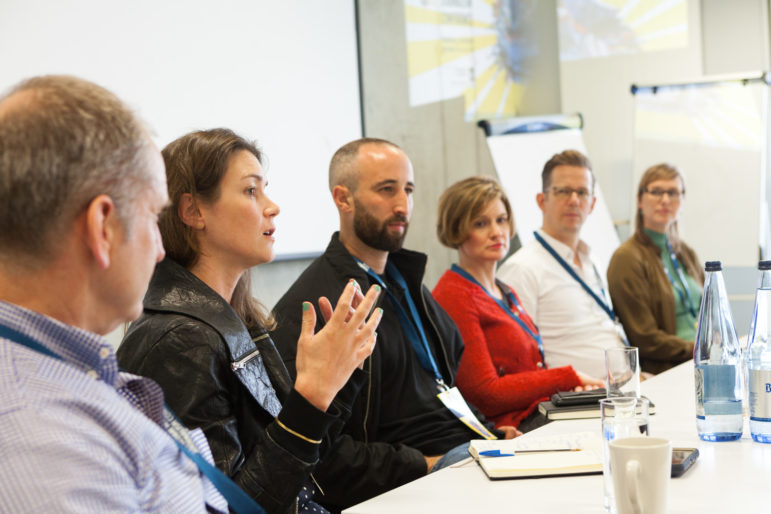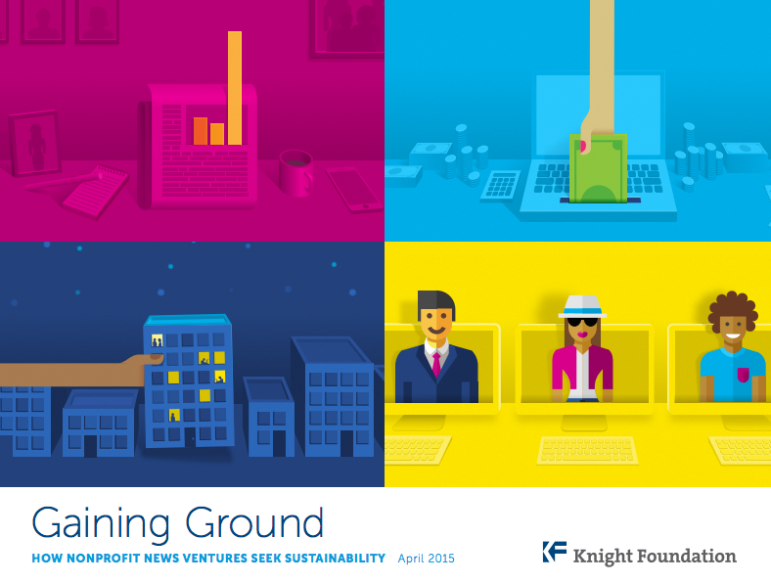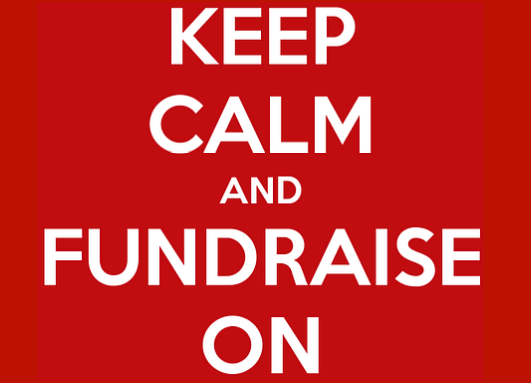

Image: Shutterstock
Introduction to Fundraising for Investigative Journalism
Finding funding for your journalism organization can be a daunting responsibility — especially if your organization does not have someone experienced in fundraising.
One possibility is to hire a fundraising consultant, who can provide suggestions on where to seek funding — or for an additional fee, write the proposals for your organization — but many media organizations do not have the extra resources to hire a fundraising professional. (How much can you expect to invest? One estimate is that you can expect to spend $25,000 in fundraising costs for every $100,000 you need to raise.) Often, the task falls to editorial staff who are already stretched thin with their reporting projects.
The process is similar to investigative journalism: first, you must research funding sources, then prepare your story, and write a compelling narrative that makes the reader understand the importance of your work — and the need to fund it.
Sources for Funding
At the 2024 International Press Institute (IPI) World Congress in Sarajevo, one panel reviewed the “profit puzzle” of investigative journalism, bringing together experts to discuss the issue of generating revenue, their successes and failures, and how they have balanced revenue and independence. Many outlets rely on grants, but a growing number are creating new ways to diversify their funding sources.
Media organizations generally seek funds from foundations and government organizations that award grants: general support, reporting grants, or project funding (to achieve a specific goal), that does not need to be repaid. These funds can be significant in size; keep in mind, however, that they can take months to secure: there’s a formal process from the initial contact, to application, to proposal follow-ups, to committee decision. Throughout the funding grant period, you will need to track your grant-related activities to provide a final report to the funder at the end of the grant period.
Some organizations also cultivate gifts and donations from individuals who share their commitment to quality journalism. The benefit here is timing: individual donors have the flexibility to make a donation as soon as they choose. The advance work needed to find and cultivate generous individuals, however, takes quite a bit of investigation. Unlike grant funders with websites that outline their funding priorities, contact information, and prior grantees — or are required by their governments to do so — individuals do not have to make any of this information public. (For more guidance on prospecting for donors, watch the GIJC23 session below with Bridget Gallagher of the Gallagher Group.)
Grant Opportunities
In the past several years, funding for journalism — and more specifically for investigative journalism — has shifted dramatically. US funders who once championed journalism as a pillar of democracy worldwide have responded to unprecedented attacks on media outlets and the loss of local news outlets in their home country — pivoting their funding strategy to bolster domestic news media. (In May 2024, Media Impact Funders released a report – “Here’s How 25 of the Top Journalism Funders Are Funding Journalism” — with details.)
As a result, the current prevailing fundraising recommendation is to seek funding dedicated to specific topics — for instance: climate change, Indigenous populations, democracy and civil society, and human rights. Our job is to make the case that investigative journalism is essential to educating communities about these topics, and hold accountable the people in power to drive change for the better.
That said, there are funders who support fellowships and training opportunities for investigative journalists. Here is a sample of places to start your funding search:
- The Global Forum for Media Development has developed a comprehensive Funding Opportunities database searchable by region, award type, theme, and deadline. Their Bottom Line newsletter will deliver the latest opportunities to your email Inbox each month; and their LinkedIn newsletter will do so each week.
- The Media Impact Funders organization hosts a worldwide map that shows where grantmakers are funding media projects.
- The Swedish International Development Agency (SIDA) supports grants for development projects (including media components) in multiple countries around the world.
- The US government offers media development grants via USAID and the Department of State; search their websites for “grants.” [Editor’s Note: As of February 2025, the second Trump administration slashed or suspended USAID funding and other State Department grants for independent journalism around the world. GIJN’s Board of Directors has publicly called for the restoration of this funding, noting the critical role this money plays in accountability journalism in many countries.]
- The European Commission lists funding opportunities for EU programs.
- Western embassies in developing countries also may have funds to grant; check with the consular offices in your region.
- The United Nations Democracy Fund helps “design, manage, mentor, and generate civil society projects for democracy.”
- The FundsforNGOs website has a tab dedicated to media funding opportunities.
💡 Pro Tips:
- Do you know of other investigative journalism organizations similar to yours that have received funding? There’s a good chance you might be eligible for grants from the same funders. Find out from those organizations’ newsletters or websites which funders are supporting their work — and research those funders to see if they might support yours as well.
- Sign up for newsletters from organizations like Philea, Alliance magazine, and JournalismFund Europe, which regularly share information about funding opportunities, trends, and donor priorities. No paid subscription is necessary.
Seeking Donations and Gifts from Individuals
As noted above, the upside of seeking gifts from people who share your commitment to accountability journalism is that these people can decide quickly if they want to support you, and to what extent. Supporters with limited means may show their commitment with smaller gifts, and people with greater resources can opt to make major gifts of significant amounts. (One quick note, however; the most recent report from the Fundraising Effectiveness Project indicates that “2023 saw a continued decrease in donors from 2020,” with 3.4% fewer donors and 2.8% fewer dollars supporting nonprofit causes in 2023.)
Generally, gifts from individuals are secured in two ways: digital fundraising (sometimes in the form of crowdfunding, or a peer-to-peer campaign) and major gift prospecting and solicitation.
- With so many people connected online, NGOs, including media outlets, are increasingly turning to online fundraising campaigns. By combining social media and newsletter promotions, for instance (and a “donate” button on your webpage), you can drive people to make gifts to your organization.
For some terrific examples of online fundraising, read more about how the Romanian news site Recorder leveraged a new audience via a breakthrough video report, and how a “coffee shop” approach could build a revenue model for your organization. Some freelance journalists have had success self-publishing, and raising funds, using platforms like Substack and Udemy for memberships and paid newsletters.
Some organizations have benefited when a generous supporter (or their family) has asked for gifts in their memory, perhaps in lieu of flowers after a loved one’s passing. This is a lovely gesture, so be sure to thank the family for thinking of your organization in this way. Another revenue opportunity is to create an online donation campaign in honor of a colleague who has achieved something remarkable: a prize-winning story, an award-winning honor, or even retirement after a long and illustrious career.
Regardless of how new readers and donors are introduced to your work — and you have obtained their email address — you should stay in contact with them, sharing your successes and organizational needs, showing them how their gift has made a difference. The goal: to keep them engaged and excited about your work, so they will remain loyal donors, ideally increasing their gifts as time goes on.
- Major gifts from individuals are large gifts (as relates to your organization: for large NGOs, a major gift may be in the hundreds of thousands; for smaller organizations, a major gift may be a couple thousand). These types of gifts generally are secured after a good deal of prospect cultivation — often with a friendly introduction. Generally, donors make large gifts because they have a personal connection to the organization (e.g., their college/university or place of faith) or when a peer — another wealthy or influential person — recommends that they make a gift.
💡 Pro Tip: Do your supporters (Board members, neighbors, donors) have connections to people who have significant capacity to give? Ask them to help make an introduction to your organization.
Read More:
- Insights from Fundraising Effectiveness Project Report’s 2023 Data
- 7 Reasons Why Donors Give
- Generational Change in Giving and Philanthropy
- 11 Proven Digital Fundraising Strategies & Best Practices for Nonprofits
- The Digital Revenue Playbook for Local News Publishers
- Crowdfunding: A Comprehensive Guide for Nonprofits
- 3 Reasons Peer-to-Peer Fundraising Drives More Engagement
- Peer-to-Peer Fundraising: A Complete Crash Course
- Major Gifts: A Guide to Securing Large Donations
- GFMD MediaDev Fundraising Guide

The Global Forum for Media Development database is searchable by region, award type, theme, and deadline. Image: Screenshot, Global Forum for Media Development. Image: Screenshot, Global Forum for Media Development
Getting to Know the Funders
The fundraising process is often compared to dating: many people are seeking a relationship, so you and the funder must first get to know each other before entering a long-term commitment. When you are able to secure a conversation, be sure to listen to your potential partner and ask questions about their funding goals and priorities. This lets them know that you care about what they are hoping to achieve with their grantmaking dollars.
Another analogy is that of a job interview: many candidates are applying for this funding, and you must help the interviewer decide you are the best candidate (in this case, for funding). Just as you would research a company where you would like to apply for a job, you should start your fundraising by researching the funder. You want to learn:
- What are the programs and missions they are interested in supporting at this time? Keep in mind that funders’ giving priorities will change over time, in response to the world around us, or changes within their organizations. Many funders shifted their giving priorities during the COVID pandemic, for instance, or as war and conflict erupted around the globe — and many will re-evaluate and review their grants strategy when they experience a leadership transition.
- What are their limitations, if any? Funders have the right to limit their funding to the programs and geographic areas that they select. Some will provide general funding, while others will fund only projects. Some will fund across a certain country or region, while others will fund only specific regions. To have any chance for funding success, your project must match their guidelines.
- What size grants or gifts do they make? If they tend to award five-figure gifts, for instance, you don’t want to ask for millions. Conversely, you do not want to ask for a five-figure gift if they have the capacity for millions!
- What is their grant process? Some funders have “rolling” deadlines, and others accept applications only at certain times during the year. Many do not accept unsolicited proposals, so you will need to try to introduce yourself with a conversation prior to the proposal phase.
- What is the best way to introduce yourself? Ideally, the funder’s website lists the program staff. You will want to connect with a staff member dedicated to a program that aligns with yours, whether that is in media/journalism, or in a specific area that you are working in (for example, climate change, underrepresented populations, civil society, etc.). Another great introduction opportunity takes place at conferences: if the funder is there, say hello, offer a very short introduction to your project, and ask if you can get their contact information to follow up with them at a later date.
The most straightforward way to learn the answers to these questions is to visit the funder’s website and thoroughly learn about their priorities, limitations, grant process, and contact information. (Many do not list their grant sizes, so additional research will be needed, from the resources listed below.)
While there are subscription-based services that can help you find these answers, they often are costly. We recommend these free resources:
- Candid’s GuideStar service will ask you to register for free; then, simply enter the name of the funder you wish to research.
- 990 Finder provides the tax returns of all US grantmakers, which includes a list of the grants they awarded: to whom, and how much.
- Funds for NGOs allows you to search funders by funding priority.
- The Charity Commission for England and Wales offers a database of funders in those countries.
- Also in the UK, the nonprofit 360 Giving shares grant data and other resources.
💡 Pro Tip: Funders like to hear the “vision” of an organization or story: where you are headed and what difference you want to make. Often, the best person to share the vision is your top manager or executive director. Ask them to make connections in person — meeting them at conferences, perhaps, or when visiting cities where the funders are located.
Perfecting Your Pitch
Think about your fundraising pitch as a news story. Once you have conducted the research to know your audience and why they might be interested, you must gather and present your information in a way that makes your proposal competitive among the many others seeking the same funding. Here is a great roadmap of the process, from LearnGrantWriting.org.

Image: Screenshot, LearnGrantWriting.org
Before Writing
First, prepare to answer your key questions:
- Who are you? What is your pertinent experience and expertise?
- Will this project/story be a collaboration with someone? Why is this important? What is their expertise?
- Who is your audience? Where do you work, and how many people will read your story or benefit from your work?
- What is the problem you seek to solve? Why now?
- What is the context/environment for your project/organization?
- What change do you want to happen as a result of your work?
- How will you achieve your results? How will you measure them?
- (anything else specific to the grant application; each application is different)
Take a Moment: Does it Make Sense to apply?
It is tempting to “chase the money” and apply for a grant simply because a funder has made money available — but does it always make sense to apply? In some instances, the answer is no. Here are some ‘red flags’ based on Michael Randall’s presentation at GIJC23 on fundraising:
- If you work outside of the funder’s geographic focus
- If you are seeking general operating funds and the funder is offering only specific project support
- If you are not able to demonstrate proficiency in the project area
- If your staff does not have the bandwidth to take on an additional project
- If the project could become a drain on your organizational funding; that is, if it begins to cost more than you budgeted
- If the project does not advance your organizational mission
Working on the Grant Application
This cannot be emphasized enough: be sure to answer the application questions. Often, applicants are so busy telling their story the way they want to, they do not fully answer the questions on the application. The funder has created the application to ensure that proposals are a good fit for their funding. Answering their questions thoroughly shows the funder that you understand, and will address their priorities.
Be wise about using “copy and paste.” Every application is different, based on the funder’s priorities. What you wrote for one funder may not answer the questions of another.
Avoid jargon and acronyms. The funding decision-makers (often called the committee, jury, board, or panel) may or may not be familiar with the terms and abbreviations you use in your work. Write to educate the application readers, assume they are not familiar, and prevent confusion by spelling out acronyms when you use them for the first time.
Get to the point. Many online application systems limit the number of words of characters that you will be able to provide. You want to provide as much data, examples, and specifics in the space that is available, rather than general terms that do not clearly explain the objective of your project.
Check your budget. Does it follow the format that the application requires? Do the numbers add correctly? Do they match what you have written in the application? Have you budgeted sufficient funds to cover the time, staff, and supplies needed to complete your project?
For more on grant writing, check out:
- Getting Grants to Fund Your Journalism, a downloadable guide that offers a wealth of tips, challenges and red flags for writing your pitch to funders.
- The Lenfest Institute’s News Philanthropy Network’s recorded, self-guided Grant Writing course that walks you through every stage of the grantseeking and writing process.
- How to Write a Winning Grant Proposal, with links to sample grant proposals.
- GIJC23 panel on The Craft of Proposal Writing, see YouTube video below
💡 Pro Tip: Before entering responses in an online application form (which may not offer a feature to save or share your draft), create a separate working draft document that you can share with colleagues for edits.
What Happens Next?
Once the funder’s grants committee has met and decided whether to award funding – and how much — you will receive notification from the funder’s staff.
If your proposal is declined, do not take it personally! Funders have only so much funding available to award, and they have to make difficult decisions on how to award it. Applications are declined for many reasons: perhaps the timing is not right, or the committee did not fully understand your objectives, or the budget did not seem sufficiently explained. More likely, they received many more proposals than they had the funding to provide.
Because the funding staff has limited time, the funder’s notification letter/email likely will not explain why your application was declined. The notification may, in fact, state that the funder does not have the bandwidth to provide feedback on proposals. Still, it is polite to respond to say “thank you” — you want to remain cordial with the foundation staff, for potential future conversations. It is entirely appropriate to ask if you might have a follow-up conversation to learn how you might work to make your future proposals more competitive. They may say no, but they may say yes!
Keep in mind that “no” does not mean “never” — it means “not now.” Don’t give up!
- Once you have more information — from a potential follow-up conversation, or by learning whose proposals were successful — you can immediately start a new conversation with that funder for the next funding cycle.
- Just because your proposal was not successful for one funder does not mean it will not be a good fit for another funder. Keep making new connections and sending new applications.
If your proposal is approved and awarded — congratulations! The funder will respond with instructions for next steps. They typically will ask you to sign and return a Grant Agreement that confirms the grant period, the grant award amount, and the reporting requirements. This is important: funders want to know that you used their funding in accordance with the agreement.
That said, circumstances can change during the grant period. It is entirely possible that situations arise that require you to shift the activities in your original proposal. Be sure to notify your staff liaison at the funder that you are considering a plan to address the changes in a way that stays true to the Grant Agreement; your funder liaison will be able to tell you if the new activities are eligible under the funder’s guidelines.
💡 Pro Tip: You can never say thank you enough! Stay in touch with your funder contacts “just because.” They appreciate when you contact them when you don’t want or need something from them. Send them links to published stories or other news related to your project, to say “thank you” again for making the project possible and to demonstrate impact of your work through their gifts. Say hello when you attend the same conferences; invite them to events; send a quick note of cheer at the New Year. People give to people, so continuing your relationship is a huge step toward finding additional funding opportunities in the future.
GIJN strives to share the most up-to-date information; if you notice that a link is broken or outdated, please let us know.
 Karen Martin is Director of Development for GIJN, with working knowledge of both sides of the fundraising experience: as a staff member for a grantmaking foundation, and 20+ years as a fundraising staffer and consultant for nonprofit organizations. She holds a Master’s degree from the S.I. Newhouse School of Public Communications at Syracuse University and worked in both television and print news media.
Karen Martin is Director of Development for GIJN, with working knowledge of both sides of the fundraising experience: as a staff member for a grantmaking foundation, and 20+ years as a fundraising staffer and consultant for nonprofit organizations. She holds a Master’s degree from the S.I. Newhouse School of Public Communications at Syracuse University and worked in both television and print news media.


